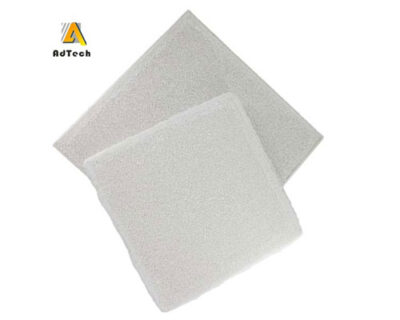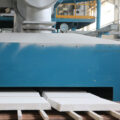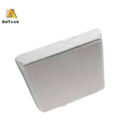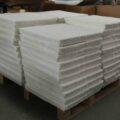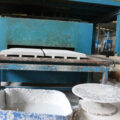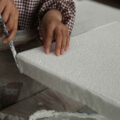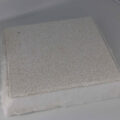Foam ceramic filtration mechanism is generally described as diffusion interception and inertial collision interception or screening, depositing layer and deep bed filtration. The filtration and purification process of aluminum foam by foam ceramics are very complicated.
Foam Ceramic Filtration Mechanism
1. By sieving inertial filtering and intercepting, friction, settlement and other mechanical filtration, the filtration efficiency is directly proportional to the mesh size of the ceramic foam filter. The smaller the mesh, the stronger the interception ability of small particles.
2. With the deposition of particles in the melt and the uneven grid support walls, the trapping ability of heterogeneous particles is improved.
3. The rough surface formed by the gap on the surface of the scaffold increases the interface between the liquid aluminum flow and the ceramic solid surface, which makes the flow direction of the particles in the liquid aluminum flow more disordered, which is conducive to the capture and deposition of solid particles.
4. Due to the micro-cracks and pinholes on the surface of the scaffold, fluoride fluxes with a strong affinity to particles such as Al2O3 were pre-deposited, which promoted the complete filter cake layer effect and strong chemical adsorption force, and enhanced the ability to capture the retained heterophase particles.
5. Moreover, from the effect of the temperature field in the melting process and transmission process of metal melt structure, the concentration bottom difference of alloy solutes must be formed. The metal melt is redistributed, integrated, redistributed, and integrated, which is also a good alloying process. Some high melting point metal phases and compounds regroup and grow up again, and the fine heterophase is beneficial to filter and capture. This can also be explained by the change of the concentration of H, Al2O3, Fe, and Ti phases before and after filtration. In particular, double stage filtration or pore gradient thick plate filtration is more obvious. Therefore, under the same precondition, the new foam ceramic filter plate has a high removal rate of the impurity phase in the aluminum melt, and the change of static pressure difference before and after filtration is greater with time. The content of H in aluminum melt before and after filtration is also obvious. Of course, the smaller the choice of the foam ceramic hole, the greater the cleanliness of the molten aluminum.

How to Select the Correct Ceramic Foam Filter
1. The choice of foam ceramic filter board is first determined according to the impurity content in the molten aluminum, the flow rate of melt injection and the quality requirement of the final casting product.
- There are many impurities and the quality of casting products is general. A large foam ceramic filter board with large holes and holes can be selected. At this time, it is important to filter the semi-continuous casting with glass fiber cloth first. It can intercept the slag from the opening and the slag washed down by the chute to prevent the blocking of the filter plate.
- The quality requirements of casting products are high, and a new type of foam ceramic filter is selected with small holes and large mesh size.
- The selection of filter plate specification is determined by the flow rate and total flow rate of melt. If the flow rate is large, the total throughput is large, and the hole size of the filter plate is small, the larger specification is selected.
2. The selection of an aluminum casting filter plate should also observe its color, pat its body, burn its object.
- The color is pure and free of impurities, which indicates that the material is uniform; if the hand is not stuck, it means that the surface is not sprayed with adhesive, which will not cause secondary pollution.
- Holding the filter plate with one hand and clapping the filter plate with the other hand, the ceramsite slag is continuously dropped, which indicates that the filter plate is of poor quality and will cause secondary pollution of aluminum liquid.
- It is a good filter plate that can be heated by the open fire or electric heating and then cooled immediately at room temperature without cracking and slag.
3. When selecting filters, the effective surface area or porosity of the foam should be carefully assessed. It can be observed that the surface layer mesh of the filter plate is homogeneous, and then the cross-section mesh homogeneity can be observed.

